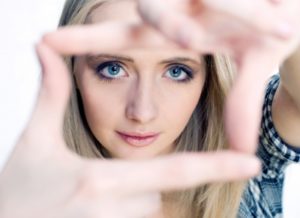Suit your selfie
 If, as the saying goes, a picture paints a thousand words, what does your selfie on LinkedIn say about you?
If, as the saying goes, a picture paints a thousand words, what does your selfie on LinkedIn say about you?
-
- This is me – take it or leave it
- I’m clueless about photography
- I don’t invest in myself
- I’m resourceful
- I think I’m a good photographer
- I like how I look today
- I can’t remember where I saved the jpg of the professional shot
- Look at me! Look at me! I’ve a got a new ‘do’!
- I’m Gen Y (true or in spirit)
- I’m a digital native
- I’ve never understood the expression ‘first impressions count’ or the one about first impressions being lasting impressions
- I’m a poor time and task manager so I’ve only got five minutes to create/update my profile
- I spend too much time in airport lounges – look what I can do with my smart phone!
- This is what I want you to think of me [and/or the company] and values I represent
- If it’s good enough for Kevin Rudd, why not me?
So many of us loathe the truths revealed by even the fanciest of photography, and yet some of us expect the home-made version to do a better job of putting our best face forward. I asked a couple of professional photographers what they think about selfies on Linked In.
Mick Davson reckons a selfie communicates a lot about you even before the reader even begins to look at what you have written about yourself.
“Some people like to use a candid photo taken at a barbecue, thinking that it portrays a ‘likability’ or casualness, which might be mistaken for a lack of professionalism,” said Mick.
“Others crop a larger photo down just to show only themselves but that looks very tacky and makes me wonder what they’re trying to hide.
“The main problem with selfies, though, is that they are generally poor quality, blurry, and over/under exposed.
Mick recommends talking to a professional photographer – not just a mate who ‘has a good camera’.
“Professional portraits for business shouldn’t be expensive but should represent a value-for-money investment. Talk to them about what you want your portraits for and the image you want to project.
“A good portrait photographer can master the technical side of this job as well as help you pose properly, dress properly and capture the real you with the shot.”
On the other hand, Phil Sheen thinks selfies should be embraced.
“It’s not always easy to have a professional photographer take your portrait and sometimes it’s hard to ask friends to take it for you, if you are feeling self-conscious,” Phil said.
“They don’t have to be tacky duck-face selfies from a night club, either. They can still look clean and professional. Sometimes selfies can bring out your real personality, which is so important when you need to stand out in an often flooded digital landscape.”
Here are Mick and Phil’s tips if you decide to stick with the selfies:
- Don’t do the ‘Facebook Special’ – holding a camera at arm’s length from yourself and go ‘click’. You might as well point the camera at your reflection in a mirror.
- If you don’t have a stand-alone camera, download an app with a camera timer so you can set your phone at a nice distance and not have to hold it yourself.
- Choose a space where the background is simple and reasonably plain, and has plenty of natural light. If you are going to take the photo outdoors, don’t be afraid to use the flash to fill in any harsh shadows.
- Position the camera on a tripod or firm solid surface so the camera points towards you – this says ‘You and I are equals’. If you look down to the camera it may make you look powerful but it can also make you look over-bearing. Looking up can make you look needy.
- Make sure you are facing the natural source of light.
- Then grab a big teddy bear or something similar to be your stunt-double while you check the frame and timer.
- Set the timer to 10 or 12 seconds, press the shutter half-way down to auto focus (if the camera allows it).
- Look to focus where your eyes will be. Once the focus has been confirmed, pressed the shutter all the way down (don’t lift your finger off first, just press all the way from the half “focus” press).
- Swap places with your stunt-double. Position yourself with your body at a 45 degree angle from the camera then turn your head to face the camera. The camera will do the rest.
- Touch up the image before you post it online – lighten or darken, soften or sharpen, depending on what your software and your skills can do (most pc users can access Paint or Office Picture Manager).
Want to learn more about communicating for a positive impression with and without words? Call or email me to book a training session for your team or an executive coaching call for yourself: leanne@presencecommunications.com.au.